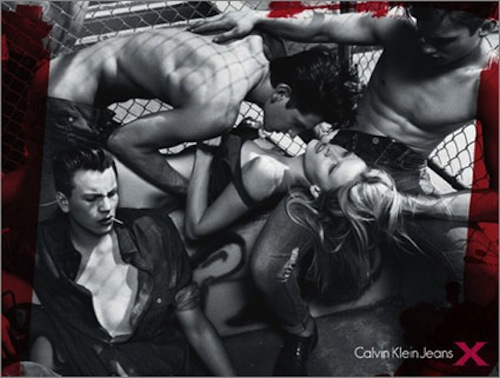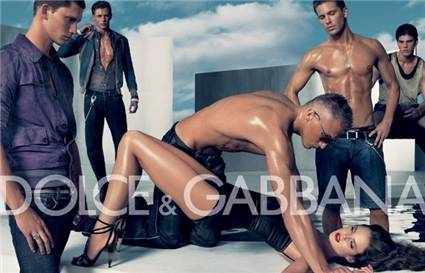The Australian Herald Sun reported this Tuesday that a Calvin Klein billboard ad (shown below) would be pulled by the Advertising Standards Bureau, due to protests by sexual assault workers and women’s advocacy groups that the ad was “highly sexualised and clearly suggestive of sexual behaviour.” Reportedly, “the Board considered that whilst the act depicted could be consensual, the overall impact and most likely takeout is that the scene is suggestive of violence and rape.”
For experienced ad critics, the ad also calls to mind the highly criticized Dolce and Gabbana “fantasy rape” ad, which ran in the U.S. in the March issue of Esquire in 2007 (after first being introduced in the Spanish market). Thankfully, this ad was also quickly banned from further publications, due primarily to women’s advocacy protests.
Of course, this issue begs a number of questions. Why do advertisers feel the need to repeatedly return to rape imagery in order to sell clothing? How do these ads ever get final approval from the companies they promote? Is this really a successful advertising tactic?
Here’s to making sure this kind of ad never becomes acceptable.
Liz White has 15 post(s) on Sneak Adtack


2 comments
Chris says:
Oct 22, 2010
Because that’s what I look for when I buy designer jeans.
Although, taking rape in a more metaphorical way, most clothing purchases should arouse moral questions, considering the appalling conditions under which most garments we buy are made. It is perhaps unintentionally ironic that advertisers should choose to make the hook suggest literal rape.
Tweets that mention Calvin Klein Billboard “Suggestive of Rape” Gets Axed -- Topsy.com says:
Oct 24, 2010
[…] This post was mentioned on Twitter by John Carroll, John Carroll. John Carroll said: Blog post: Calvin Klein Billboard "Suggestive of Rape" Gets Axed http://sneakadtack.com/?p=571 […]